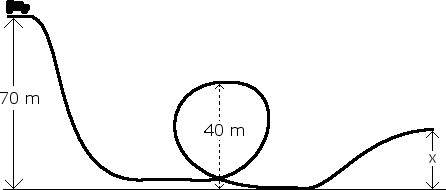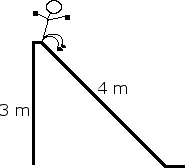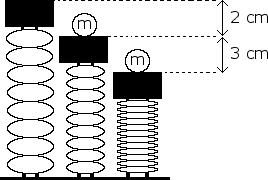Roller Coaster Physics
The figure below depicts a roller coaster. Assume the roller coaster starts at a velocity of 0 m/s from 70 m.

B. Determine the height of the track at point x. It is known that the roller coaster has a velocity of 30 m/s at x.
Related Problems
The 100 kg box shown below is being pulled along the x-axis by a student. The box slides across a rough surface, and its position varies with time according to the equation , where is in meters and is in seconds.

C. Calculate the net work done on the box in the interval = 0 to = 2 s would be greater than, less than, or equal to the answer in part (C). Justify your answer.
A 20 kg student is about to go down a slide. There is a 3 N frictional force opposing his movement. Assume his velocity at the top of the slide is 0 m/s. Find his velocity at the bottom of the slide.

A student is about to be launched from a spring loaded canon. The student weighs 60 kg and the spring constant is 200 N/kg. Find the students velocity the moment he leaves the canon if the spring is compressed, x = 3 m. Also find the students velocity after the spring has decompressed to x = 2 m.

A marble, m, of mass 100 g is placed onto a platform attached to a spring. The weight of the marble compresses the spring 2 cm, as shown below. A force is then applied to the platform to compress the spring an additional 3 cm. When the force is taken away, the spring decompresses and launches the marble upward. What is the maximum height the marble obtains above the unstretched spring (the spring with no mass on it).
